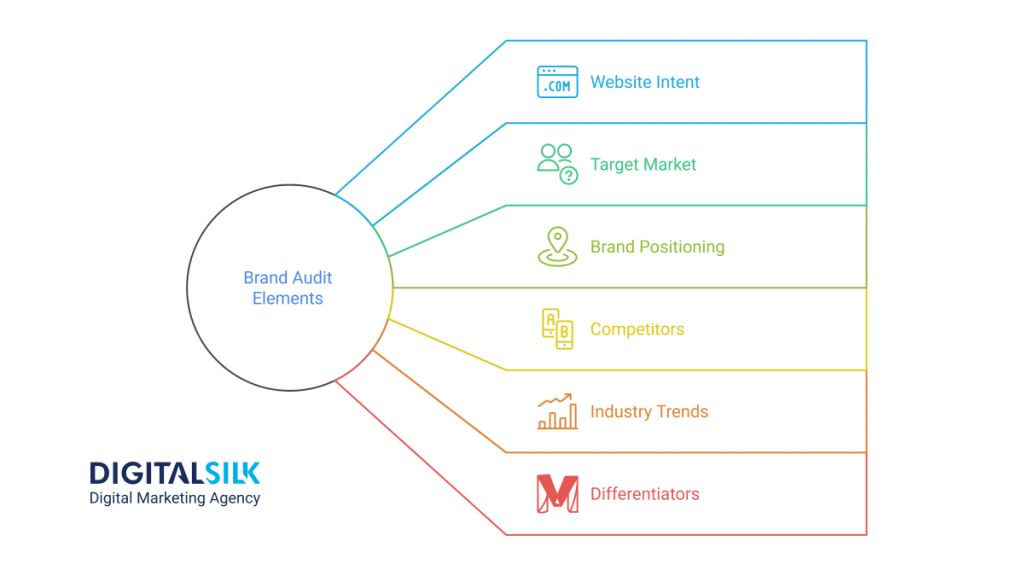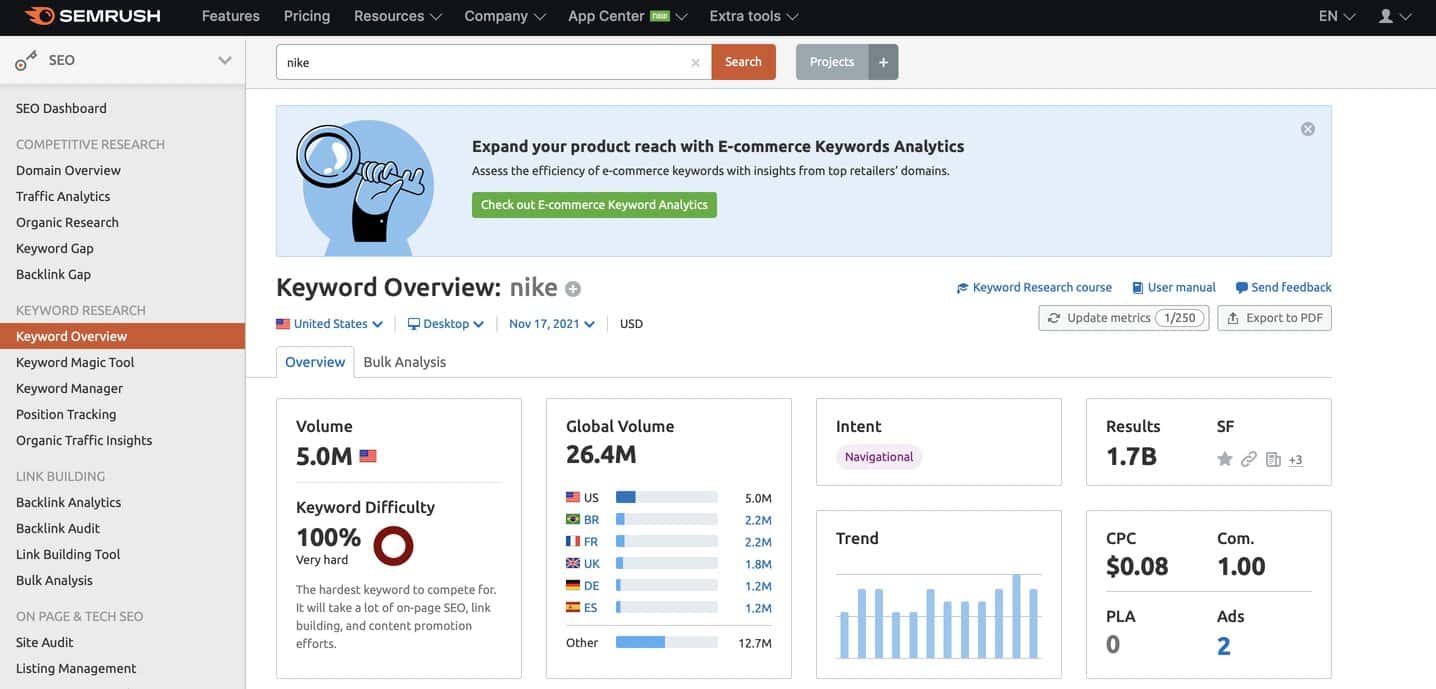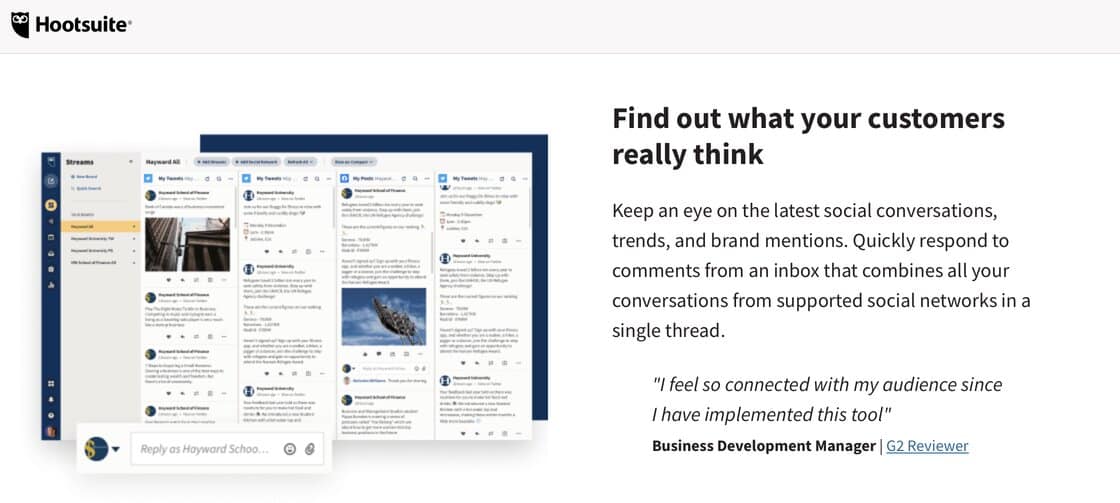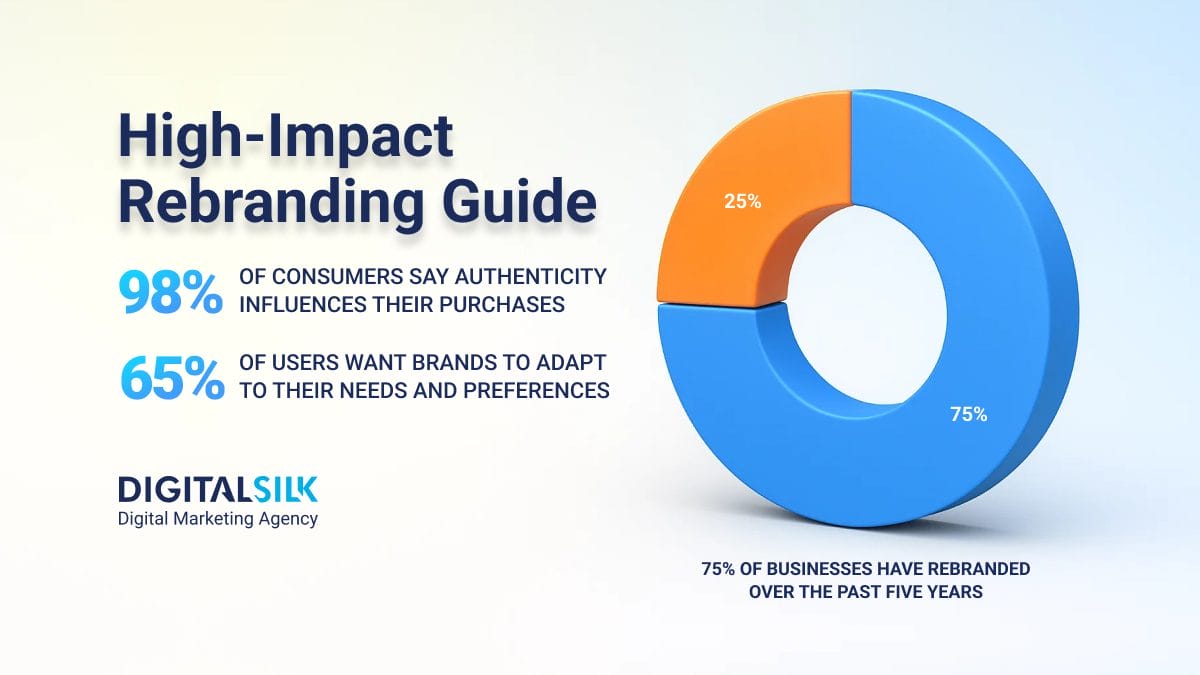Are you experiencing a decrease in revenue? Are you hearing chatter from consumers that they don’t understand your brand?
Or, maybe your sales are high, but you’re still losing business to competitors, and you can’t figure out why.
A detailed brand audit can provide valuable insights to help you assess your strategy, messaging, visual identity and more, so you can plan actionable steps for improvement.
At Digital Silk, brand audits are part of our brand strategy.
Our experts audit your brand and conduct thorough research into your industry, target audience and competitors to define your ideal brand position, create targeted messaging and define your unique visual identity.
Here, we’ll detail the seven-step brand audit process and explain how a comprehensive audit can benefit your brand.
Digital Silk develops authentic brands. Request a quote
What Is A Brand Audit?
A brand audit is a thorough assessment of a brand’s current position in the market.
Au audit helps you understand how your customers perceive and connect with your brand, which allows you to gain insights into your strengths and weaknesses, and define a clear strategy for improvement.
Why Should You Audit Your Brand?
With global online sales reaching almost $4.29 trillion in 2020, there’s no doubt that online competition is increasing in nearly every industry.
If you don’t regularly audit your brand, including your brand strategy, you may end up falling behind competitors without even realizing it’s happening.
A brand audit can help you:
- Determine your brand’s market performance and positioning to help you map out corrective marketing solutions for your brand
- Discover your brand’s strengths and weaknesses and identify areas of your marketing strategy that need to be improved
- Align your offerings more accurately with your customers’ expectations to help you stay competitive, differentiate yourself in the market and ensure repeat customers
- Gain data-backed insights to base future decisions on, from marketing campaigns to your digital strategy and more
How To Conduct A Brand Audit
Now you know what a brand audit is and why it’s important, but where do you start?
We’ve laid out a seven-step process that will help you assess your brand’s current position in the market so you can create a strategic plan for areas that need improvement.
1. Create A Strategy
The first step is to create a strategy for your audit.
Create a list of areas you’ll assess that relate to your business, both internally and externally, directly and indirectly. A simple way to do this is to use mind mapping.
Elements to consider during your brand audit include:
- Your website’s intent
- Your target market
- Your brand’s positioning
- Your competitors
- Your current and expected industry trends
- Your differentiators, such as brand image, pricing, distribution channels or your unique value proposition

2. Study Your Web Analytics
An important part of your brand audit is taking stock of your website analytics.
They’re a great bellwether for brand awareness and recognition. For example, declining web traffic could indicate declining interest in your brand, or a drop in your search engine ranking.
Similarly, if your user demographic data doesn’t match the user personas you’ve formulated, it might be a sign that your brand messaging is attracting the wrong traffic.
Key metrics to consider regarding your website’s analytics include:
- Traffic: The first step here is to determine whether you’ve seen an increase or decrease in traffic. The second step is to analyze exactly where your traffic is coming from. If it’s not coming from your target audience, it likely isn’t valuable.
- Bounce Rate: Are your visitors staying long enough to interact with your site? A high bounce rate could mean several things. Your content isn’t valuable, you aren’t attracting the right audience with your strategies and/or the keywords you’re using don’t align with search intent.
- Conversion Rate: Conversion for your brand might mean making a purchase, signing up for a newsletter, requesting a quote, or something else. Define what conversion means for your brand and see how your website is performing.

[Source: SEMrush]
3. Review Your Social Data
The next step is to measure the efficacy of each of your social channels to determine their online reception.
Make a list of all of your social channels. They’ll have in-app analytics tools you can use; or you can utilize an all-in-one platform (like HootSuite pictured below, for example) to view all your metrics in one place.
Take note of the trends you observe. A lack of engagement might signal a disconnect between your brand voice and your target audience, for example.
It also might raise a red flag about your relationship with your audience. Are you providing valuable content tailored to your ideal customer, then engaging actively and honestly to build trust and loyalty?
One great feature of all-in-one social management platforms is audience sentiment analysis. This measurement takes into account all of your comments, mentions, shares and saves, and hashtags that say something about your posted content. It gives you a clear idea of how your brand is being perceived and reacted to on social media.

4. Audit Your Website UX
Your website is your brand’s digital home. It’s the prime location for brand education – where your prospects can learn about what makes your products and services right for them.
Its messaging, visual elements and overall user experience design should be consistent with your brand’s identity.
You need to clearly assess your site’s user journey and overall experience:
- Is your UVP clear and immediately visible?
- Does your messaging communicate your offering clearly and concisely?
- Are the color palettes, typography, and visual elements consistent with your presentation on other channels?
- Do your visuals accurately portray your offering and your brand’s unique persona?
- Can users browse your website and find the information they need easily?
Poor web design can directly impact your brand perception. In fact, 75% of users judge a brand’s credibility based on its web design.
And it makes sense: Imagine visiting a luxury hotel website and encountering low-quality, pixelated images and outdated UX design. You’d think twice before paying those rates, wouldn’t you? (On that note, we have a guide to hotel web design with examples and best practices — check it out!)
5. Gauge Customer Feedback
More recent data highlights the growing importance of customer experience in driving consumer spending.
52% of consumers are more likely to return to brands that deliver an exceptional customer experience.
While analytical research is important, getting feedback from your customers is just as crucial. Your customers can help you uncover answers to questions that numbers often can’t.
The way to solicit feedback is simple: just ask for it.
For example, you can include a pop-up form after a purchase asking your customers to rate the customer service experience or send out an email survey asking loyal customers why they prefer your brand over competitors.
The world of online reviews is a rich resource as well. Your customers might be generating feedback, but not submitting it directly to you. Check out forums like Reddit and browse review sites to see how users perceive your brand.
6. Evaluate Your Competitors
By assessing your competitors’ websites, marketing and advertising materials, social media presence, customer service and other aspects of their brand, you can identify their strengths and weaknesses, and find opportunities to elevate your own brand.
For example, a 2020 survey found that an increasing number of organizations, such as Domino’s pictured below, are using AI as a tool for generating value.
If your competitors are using AI features you have yet to implement, such as chat bots to enhance customer experience or geospatial software to retrieve and analyze geographic and spatial data, you may be missing out on revenue.
Again, don’t miss the opportunity here to learn from customer feedback. Browse reviews on your competitors’ site and elsewhere online to get a feel for what’s working for them and what isn’t.
If you can better address a need in an area where others are missing the mark, you’ll get the competitive edge.

7. Make Adjustments
If the process of conducting a brand audit is to evaluate where your brand is positioned on the market and how it’s viewed within your industry, the ultimate goal is to use that information to improve your performance.
Don’t just sit on all of these valuable insights; create a specific, actionable plan for the areas of improvement you identified.
For example, let’s say you discover that your bounce rate is over 70%. Your action plan might include a detailed analysis of your content over the next six weeks to re-assess the keywords you’re aiming to rank for, to determine whether your content is providing value and speaking to users’ search intent.
Or, maybe your shopping cart abandonment rate has increased over the past six months. You could roll out automatic emails to remind shoppers of their abandoned cart and offer a discount code.
Be specific in creating tasks to achieve quantifiable goals. Your findings in the audit process will help you set these actionable targets to address issues with defined goals and a clear project timeline.
Our Brand Audit Process At Digital Silk
At Digital Silk, a brand audit is part of our branding strategy. We use the insights we discover to craft a strategy unique to your brand.
Our goal isn’t to create a brand strategy that gets put into a book, placed on a shelf or hidden in a folder and never looked at again.
Our brand strategists use this strategy to perfectly position your brand on the market, craft your visual identity, fine-tune your messaging and more. Here’s how:
- Research: First, our experts dive into your brand’s unique offering, conduct industry research and competitor research and identify your unique value proposition.
- Brand Foundation: Next, our brand strategists evaluate your brand’s values, target audiences and brand mission & vision to develop a foundation for our upcoming strategy.
- Brand Positioning: To determine the ideal positioning for your brand, we look at your current positioning, along with your marketing and business potential and find opportunities to improve your brand’s position and messaging.
- Brand Messaging: Once we’ve learned everything we need to know about your brand, it’s time to deliver sample messaging for your brand that will translate into actionable results and conversions. We start with your UVP and create messaging on why consumers should care about your brand and ultimately, why should they buy from you. We also craft an Elevator Pitch — a short description to spark interest in what your company offers.
- Brand Visual Identity: Finally, we do a deep dive into your brand’s visual identity. This includes a review of your logo, color palette, fonts and graphical elements. Our designers create unique imagery collateral samples so you can visualize your new or improved identity, and brand guidelines so you can ensure consistency across all channels.
A brand strategy is about more than your website.
It communicates your brand’s unique selling points to clients or customers and helps craft your brand’s visual identity, voice and messaging, resulting in a cohesive image, from your website to social media channels and more.
Wrapping Up On Brand Audits
While analytics platforms and other tools can help you conduct your own brand audit, leaving it to the pro’s can not only help ensure you gain truly valuable insights but set you up with detailed strategies on how to use those insights to improve different areas of your brand.
At Digital Silk, brand audits are part of our branding services.
Not only will our experts perform your brand audit, but they’ll use data-backed research to craft specific strategies for your brand, from messaging and positioning to a unique visual identity.
A brand audit gives you the insights you need to:
- Determine your brand’s market performance and positioning
- Discover your brand’s strengths and weaknesses, plus opportunities for improvement
- Align your offerings more accurately with your customer’s expectations
- Construct clear recommendations for new strategies
"*" indicates required fields









